Votre message a été envoyé.
Nous traiterons votre demande et vous contacterons dès que possible.
Le formulaire a été soumis avec succès.
Vous trouverez de plus amples informations dans votre boîte aux lettres.
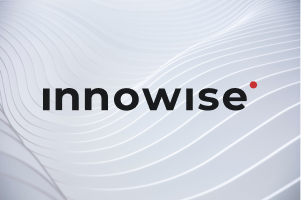
Sélection de la langue
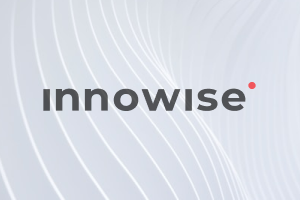

La cartographie des données dans le secteur des soins de santé est un processus qui consiste à faire correspondre des champs entre des bases de données de différents systèmes d'information. En d'autres termes, la cartographie des données donne un sens à chaque connexion et crée un plan détaillé pour toutes les données relatives aux soins de santé au sein d'un écosystème informatique.
Les données sur les soins de santé proviennent de différentes sources, telles que DME ou DSE, CRM médicaux Les sources d'information les plus courantes sont les appareils portables, les systèmes d'imagerie médicale et les systèmes de facturation. Chacune de ces sources utilise des normes d'échange de données et de terminologie différentes, ce qui peut naturellement compliquer les choses. Par exemple, un système de radiologie peut utiliser DICOM et un DSE peut utiliser HL7, ou différents hôpitaux peuvent coder des procédures en utilisant des systèmes différents, comme CPT et SNOMED CT. Ces variations compliquent l'intégration et l'interprétation des données médicales.
En utilisant la cartographie des données dans le cadre de votre développement de logiciels pour les soins de santé les prestataires peuvent facilement connecter des données similaires et les transformer en une norme unifiée. Par conséquent, les entreprises du secteur de la santé peuvent surmonter la fragmentation commune aux systèmes de données dans l'industrie et utiliser efficacement les données pour les soins aux patients.
Mieux contrôler l'écosystème informatique des soins de santé grâce à la cartographie des données
La cartographie des données fait généralement partie du processus de migration des données dans le cadre de projets plus importants. Dans le secteur des soins de santé, elle est appliquée dans différents domaines, mais il existe des scénarios communs.
Migration des données se réfère à le transfert de données d'un système à un autreLa cartographie des données est souvent utilisée lors du passage à un nouveau système, de la mise à niveau d'un système existant, du passage à l'informatique dématérialisée ou de la transformation numérique. Lors de la migration, la cartographie des données établit des connexions entre les champs de données dans différents systèmes informatiques, permet un transfert sans erreur et aide à maintenir la cohérence des données entre les solutions.

Intégration des données combine des données provenant de différentes sources en un seul endroitLa cartographie des données est une étape naturelle de l'intégration, car elle fait le lien entre les systèmes qui utilisent les mêmes données et garantit la cohérence et l'exactitude de celles-ci. La cartographie des données est une étape naturelle de l'intégration, car elle relie les systèmes qui utilisent les mêmes données et garantit leur cohérence et leur exactitude.

Les prestataires de soins de santé doivent souvent convertir des données d'un format à un autreLa cartographie des données de santé permet d'intégrer plusieurs systèmes ou de faciliter l'utilisation et l'analyse des données. La cartographie des données de santé permet de comprendre les liens entre les données des bases de données, quelle que soit la manière dont l'information est stockée, et de procéder ensuite à leur transformation dans un format unifié.

Lors de la mise en œuvre de la veille stratégique dans le secteur des soins de santé, la cartographie des données permet de s'assurer que les données provenant de sources multiples sont correctement alignées pour l'analyse. En reliant différentes sources de données, on rationalise l'extraction, le nettoyage et la préparation des données. Ainsi, les outils de BI accèdent à des données prêtes à être analysées et fournissent des informations plus précises et exploitables.
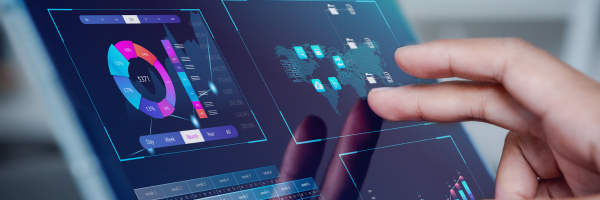
De nombreuses solutions de reporting utilisent une terminologie et des structures de données uniques, de sorte que les entreprises médicales doivent adapter leurs données. Grâce à la cartographie des données, les prestataires de soins de santé synchroniser leurs données avec la terminologie et la structure des rapports. Il permet de définir les données nécessaires à l'établissement de rapports et d'enregistrements spécifiques et de rationaliser ce processus.

Échange de données informatisées (EDI) automatise l'échange de documents entre les entreprises du secteur de la santé - comme les hôpitaux et les compagnies d'assurance - en optimisant les flux de travail et la gestion des documents. Dans ce cas, la cartographie des données spécifie les données utilisées dans les documents, leur emplacement et la manière dont elles doivent être transformées pour correspondre à la structure de données requise par le logiciel cible.

Migration des données se réfère à le transfert de données d'un système à un autreLa cartographie des données est souvent utilisée lors du passage à un nouveau système, de la mise à niveau d'un système existant, du passage à l'informatique dématérialisée ou de la transformation numérique. Lors de la migration, la cartographie des données établit des connexions entre les champs de données dans différents systèmes informatiques, permet un transfert sans erreur et aide à maintenir la cohérence des données entre les solutions.

Intégration des données combine des données provenant de différentes sources en un seul endroitLa cartographie des données est une étape naturelle de l'intégration, car elle fait le lien entre les systèmes qui utilisent les mêmes données et garantit la cohérence et l'exactitude de celles-ci. La cartographie des données est une étape naturelle de l'intégration, car elle relie les systèmes qui utilisent les mêmes données et garantit leur cohérence et leur exactitude.

Les prestataires de soins de santé doivent souvent convertir des données d'un format à un autreLa cartographie des données de santé permet d'intégrer plusieurs systèmes ou de faciliter l'utilisation et l'analyse des données. La cartographie des données de santé permet de comprendre les liens entre les données des bases de données, quelle que soit la manière dont l'information est stockée, et de procéder ensuite à leur transformation dans un format unifié.

Lors de la mise en œuvre de la veille stratégique dans le secteur des soins de santé, la cartographie des données permet de s'assurer que les données provenant de sources multiples sont correctement alignées pour l'analyse. En reliant différentes sources de données, on rationalise l'extraction, le nettoyage et la préparation des données. Ainsi, les outils de BI accèdent à des données prêtes à être analysées et fournissent des informations plus précises et exploitables.

De nombreuses solutions de reporting utilisent une terminologie et des structures de données uniques, de sorte que les entreprises médicales doivent adapter leurs données. Grâce à la cartographie des données, les prestataires de soins de santé synchroniser leurs données avec la terminologie et la structure des rapports. Il permet de définir les données nécessaires à l'établissement de rapports et d'enregistrements spécifiques et de rationaliser ce processus.

Échange de données informatisées (EDI) automatise l'échange de documents entre les entreprises du secteur de la santé - comme les hôpitaux et les compagnies d'assurance - en optimisant les flux de travail et la gestion des documents. Dans ce cas, la cartographie des données spécifie les données utilisées dans les documents, leur emplacement et la manière dont elles doivent être transformées pour correspondre à la structure de données requise par le logiciel cible.

Des données de mauvaise qualité coûte en moyenne $12,9 millions d'euros par an aux entreprises selon Gartner. Les problèmes liés aux données s'accumulent et conduisent à des écosystèmes de données enchevêtrés et à des inexactitudes qui influencent la prise de décision. La cartographie des données peut aider à résoudre bon nombre de ces problèmes et apporter les avantages suivants.
La cartographie des données faisant partie intégrante de l'interopérabilité, elle aide les professionnels de la santé à accéder à l'ensemble des informations relatives aux soins, même si elles sont réparties entre différents systèmes. Elle leur permet de gagner du temps dans la recherche des données, d'améliorer la coordination des soins et de réduire les charges administratives.
En rapprochant des données provenant de différentes sources, les prestataires de soins de santé peuvent mieux comprendre le profil de santé d'un patient, y compris ses allergies, ses médicaments et ses traitements antérieurs. Cela permet d'orienter plus rapidement les patients, de réduire les délais et d'améliorer les résultats pour les patients.
La saisie manuelle des données est courante dans le secteur des soins de santé et entraîne souvent des erreurs, des doublons ou des problèmes de facturation. La cartographie des données peut faciliter le transfert des dossiers entre différents systèmes, ce qui allège la charge de travail du personnel médical. Des études montrent que cela fonctionne : 30% des fournisseurs déclarent que les plateformes de données agrégées les ont aidés à réduire les coûts et de mieux gérer leur personnel.
Grâce à une cartographie des données appropriée, les organismes de santé peuvent s'assurer que les dossiers sont structurés de manière cohérente et gérés en conformité avec des cadres réglementaires tels que HIPAA et GDPR. En organisant et en consolidant les données sur une seule plateforme, les organisations peuvent garantir l'exactitude des données et maintenir plus facilement les exigences de sécurité pour les informations de santé protégées.
En adoptant la cartographie des données, les organismes de soins de santé peuvent effectuer une analyse complète des données et identifier les domaines d'optimisation des ressources. Ces informations permettent d'affecter plus efficacement le personnel et les équipements, d'améliorer les performances du personnel et de maximiser l'utilisation des ressources.
Les chercheurs peuvent utiliser la cartographie des données pour créer des ensembles de données complets et mener des essais cliniques et des études de recherche à grande échelle. Cela leur permet d'identifier les tendances des maladies, de prévoir les besoins en ressources et d'élaborer des stratégies de soins de santé plus efficaces.
" D'après mon expérience, les prestataires de soins de santé disposant d'écosystèmes de données complexes ont absolument besoin d'une cartographie robuste des données, en particulier lorsqu'ils sont en cours de transformation numérique. J'ai pu constater de visu à quel point il est essentiel de rationaliser le flux de données entre les différents systèmes pour garantir l'exactitude et la cohérence. Mon équipe et moi-même avons une compréhension approfondie des processus de soins de santé et pouvons aider votre entreprise à cartographier les données de soins de santé, en jetant les bases de projets informatiques plus complexes et innovants."

Aleh Yafimau
Gestionnaire des livraisons
Le logiciel de DSE Epic est utilisé par plus de 305 millions d'utilisateurs dans le monde. La cartographie des données est au cœur de l'échange transparent de données. Cette technologie permet aux prestataires de soins de santé d'échanger des informations sans effort et de fournir des soins améliorés et personnalisés.
Merative, anciennement connu sous le nom d'IBM Watson Health, applique la cartographie des données pour intégrer les données des patients à travers les institutions pour une recherche plus approfondie. Elle garantit également l'exactitude et la normalisation des données pour une analyse précise de l'IA, ce qui permet de prendre de meilleures décisions en matière de soins de santé.
La plateforme HealthShare d'InterSystems gère plus d'un milliard de dossiers médicaux dans le monde et résout le problème des silos de données dans le secteur des soins de santé. Grâce à la cartographie des données, HealthShare intègre et regroupe de manière transparente les informations sur les patients provenant de diverses sources, telles que les dossiers médicaux électroniques et les systèmes d'imagerie.
Redox est spécialisé dans l'intégration des données de santé, reliant les organisations, les applications et les sources de données. Elle utilise la cartographie des données pour optimiser l'échange de données et garantir un accès et un échange sécurisés des données des patients. En outre, Redox facilite l'échange de données bidirectionnelles en temps réel dans des environnements multiples et permet la transformation des normes de données existantes.
La cartographie des données est essentielle pour gérer l'énorme quantité de données générées par les soins de santé. Grâce à la cartographie des données, les prestataires de soins de santé peuvent fournir des soins plus éclairés, réduire les erreurs et les coûts opérationnels, et personnaliser les plans de traitement.
Cependant, une mise en œuvre réussie nécessite une planification minutieuse et de l'expérience. Notre équipe d'experts peut vous aider à naviguer dans la complexité du processus et à assurer une transition en douceur. Si vous souhaitez en savoir plus sur la cartographie des données, ses avantages potentiels pour votre entreprise et la manière dont nous pouvons vous aider à l'exploiter pour obtenir des changements positifs, n'hésitez pas à nous contacter, n'hésitez pas à nous contacter.
En bref, la cartographie des données dans le secteur de la santé consiste à relier les champs entre les bases de données des systèmes. La cartographie est une étape essentielle de la migration et de l'intégration des données et est utilisée pour échanger des informations entre deux ou plusieurs systèmes, comme le DME, le DSE ou les applications destinées aux patients. En outre, elle permet de réaliser des analyses basées sur des ensembles de données, des analyses prédictives, des tests de médicaments, des recherches sur les patients, etc.
La cartographie des données rationalise l'agrégation d'informations provenant de sources multiples, ce qui facilite la coordination des soins entre les professionnels de la santé et rationalise la prise de décision clinique. Lorsqu'il n'est pas nécessaire de saisir manuellement des données dans plusieurs systèmes, les risques de perte de données, d'erreurs médicales, de dossiers manquants ou dupliqués, ainsi que les problèmes de sécurité et de conformité sont réduits.
La cartographie des données de santé, lorsqu'elle est bien faite, ne compromet pas la sécurité et la conformité réglementaire. Cela nécessite de crypter les données à l'aide d'algorithmes robustes et de les stocker dans un environnement protégé, dont l'accès est limité au seul personnel autorisé. Pour respecter les réglementations en matière de confidentialité telles que l'HIPAA et le GDPR, les entreprises de santé qui souhaitent mettre en œuvre la cartographie des données ont besoin de mesures de protection supplémentaires, comme des audits réguliers et la formation du personnel aux meilleures pratiques en matière de sécurité des données.




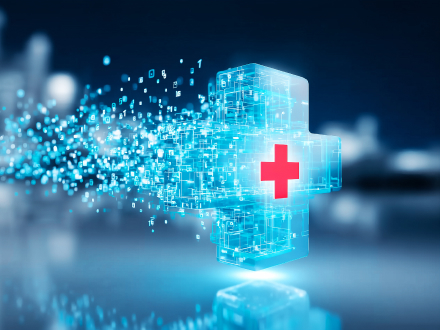








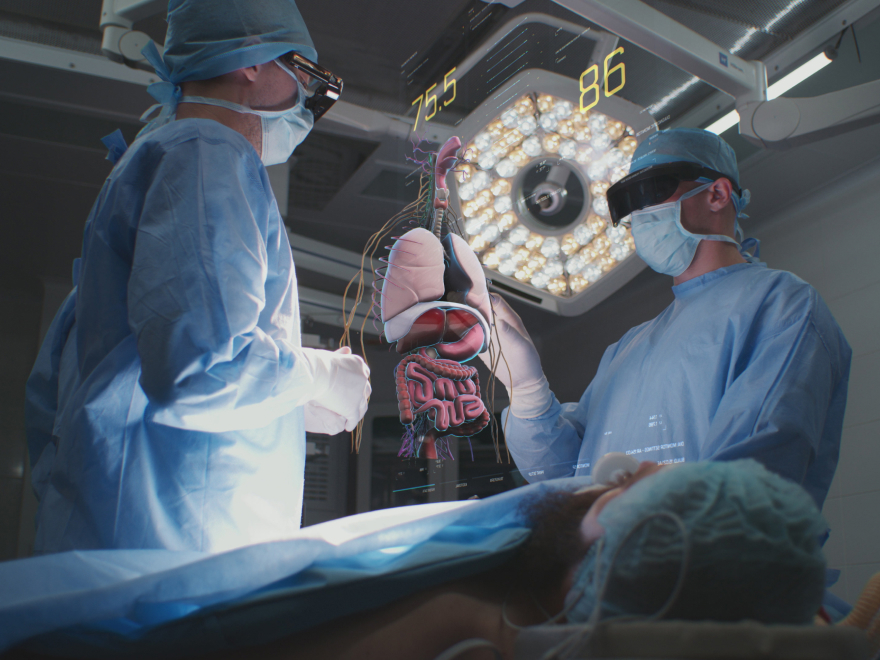
Votre message a été envoyé.
Nous traiterons votre demande et vous contacterons dès que possible.

En vous inscrivant, vous acceptez notre Politique de confidentialitéy compris l'utilisation de cookies et le transfert de vos informations personnelles.